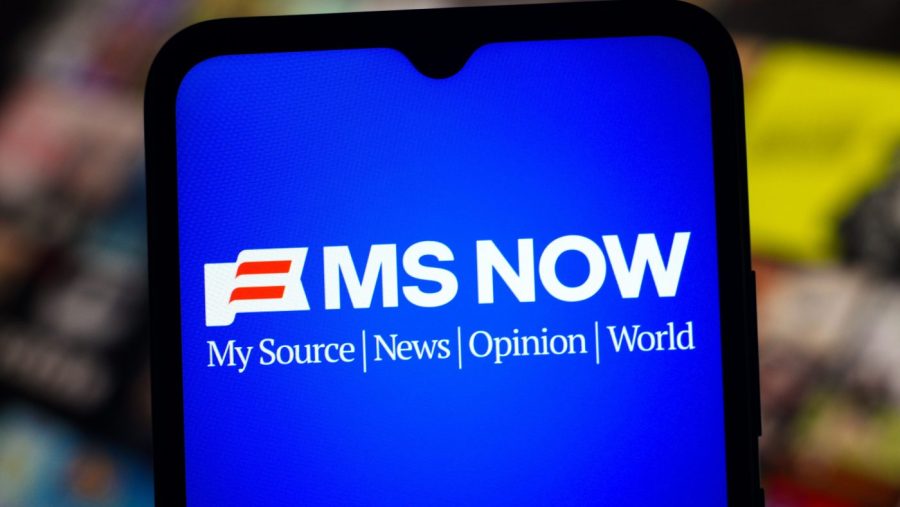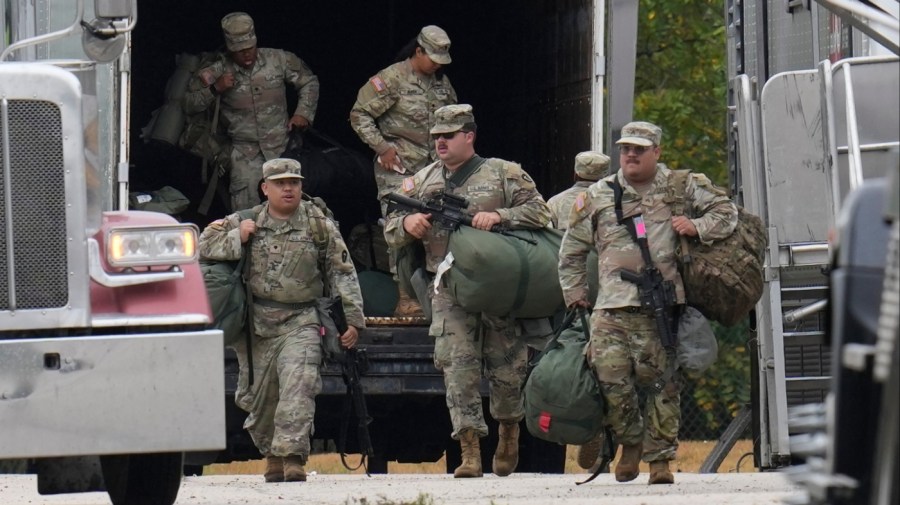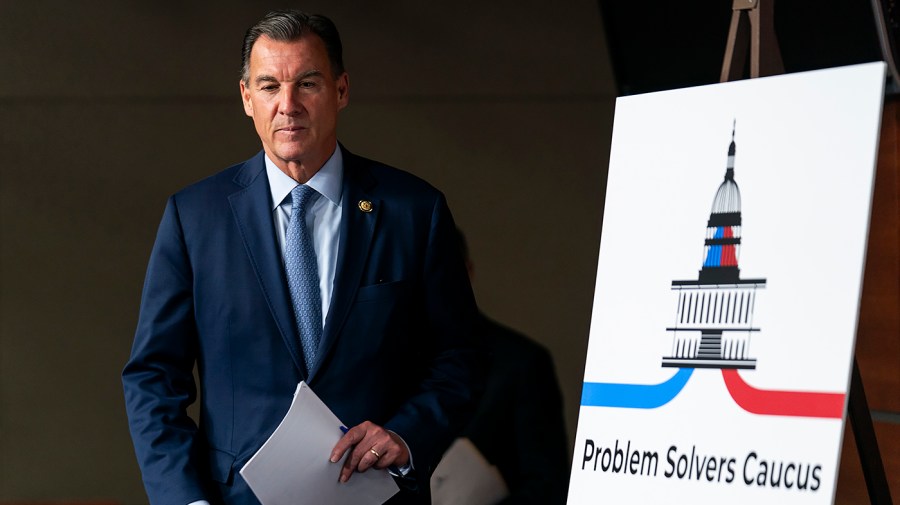
The Trump administration is amassing a massive U.S. military presence in the Caribbean, deploying warships, surveillance planes and fighter planes as it blows up alleged drug-trafficking boats in the waters around South America.
The main target of the flurry of activity appears to be Venezuelan President Nicolas Maduro, whom the administration has called an “illegitimate leader.” The country’s attorney general said over the weekend there is “no doubt” that Trump wants to topple Maduro’s regime.
Department of Defense (DOD) on FridayorderedUSS Gerald R. Ford and her escort ships are headed to the U.S. Southern Command (SOUTHCOM) area of responsibility, significantly expanding the U.S. military presence there. already counted10,000 US troops are supporting anti-narcotics operations.
Earlier this month, TrumpConfirmedHe authorized the CIA to conduct covert operations in Venezuela. The US flies B-52 Stratofortress bombers near the Venezuelan coast. And last week, two Air Force B-1 bombers flew near Venezuelan airspace.
“So I think this is another example of the president trying to intimidate Nicolas Maduro and his top generals, so that there is hope that … there might be some type of rupture within the regime, which might lead to change that might be more favorable to the opposition, to begin with,” said Christopher Hernandez-Roy, deputy director of the Americas program at the Center for Strategic and International Studies and senior fellow.
He described the actions of B-52 bombers, which flew for hours off the Venezuelan coast, as meant to “intimidate” the country and its military. He said it appeared the US was “indicating some kind of imminent kinetic action inside Venezuela.”
“And although that hasn’t happened yet, it looks like, it looks like the administration is close to it, but I think they would prefer their pressure to create some kind of internal rift within the government that could lead to a change in the government without the U.S. actually getting involved in military activities on the actual territory of Venezuela,” he said in an interview with The Hill last week.
Trump and hisclose associateThe possibility of a US ground attack in Venezuela has increased as the White House steps up pressure against Maduro, accusing him of being the leader of the Tren de Aragua, a transnational criminal gang designated by the US government as a foreign terrorist organization with roots in Venezuela.
Over the weekend, Trump hinted that land strikes could happen soon.
The president told reporters on Saturday, “We are going to do that to Venezuela. I can tell you one thing. We have stopped all drugs coming in by sea. I will soon stop all drugs coming in by land. You will see it beginning. They will not want to do that. You will stop seeing drugs coming into our country.”
White House spokeswoman Anna Kelly said Trump promised to “fight” drug cartels while campaigning during the 2024 election and that he has taken “unprecedented action to stop the scourge of narcoterrorism that has resulted in the unnecessary deaths of innocent Americans.”
“All of these decisive strikes are against designated narco-terrorists who bring deadly poisons to our shores, and the President will continue to use every element of American power to stop the flood of drugs into our country,” Kelly said in a statement to The Hill on Monday.
The USS Gerald R. Maduro accused the administration on Friday of “engineering” a war against him after ordering the Ford to go to Southcom after it was docked in the Adriatic Sea. It has a squadron of F/A-18 Super Hornet and a helicopter squadron.
The DOD did not respond to The Hill’s request for comment.
initially president Said Last week the administration may go to Congress for permission to attack land-smuggling drug cartels. But a day later, he rejected the need to ask lawmakers on Capitol Hill for a declaration of war over the attacks against alleged cartel boats, operations that have raised questions among senators from both parties and have taken place off the Venezuelan coast and in the eastern Pacific Ocean.
“I think we’re going to kill the people who are bringing drugs into our country, OK? We’re going to kill them,” TrumptoldCorrespondents at the White House on Thursday.
Experts say if the US military is given the green light, it could target drug cartel infrastructure such as port facilities and warehouses where drug smugglers store cocaine before being shipped elsewhere.
“Any of these can be attacked and can be attacked in many different ways. It can be done with light types of raids – can be done with air strikes. There are many different ways that can happen,” said Dr. Bradley Martin, a senior policy researcher at RAND who retired from the Navy as a surface warfare captain.
The U.S. won’t go after drug labs, Hernandez-Roy said, because most of the cocaine is made in Colombia. He said that if land strikes occur, they would likely expose the “true” intentions of the U.S. government, whether the administration is combating drug trafficking or trying to force regime change in Venezuela.
“Now, the efforts made so far for regime change are just to pressure and intimidate them, but if they then start going after targets inside Venezuela, it’s a completely different game,” he said.
Tarek William Saab, Venezuela’s attorney general and a close ally of Maduro,toldIt was said in the BBC’s Newshour program on Sunday that Trump is trying to overthrow the Venezuelan government.
Saab said there should be no land invasion of Venezuela, but that Caracas is “ready.” The attorney general said Venezuela is “still ready to resume negotiations” with the US, even though Trump cut off diplomacy with Caracas in early October.
Geoff Ramsey, a non-resident senior fellow at the Atlantic Council, said Maduro’s regime is still intact and the US is near a crossroads.
“I think there’s really no indication of any kind of rift in the regime or any kind of high-profile defections, and so I think we’re getting to the point where the United States is going to have to decide whether or not to pursue military strikes inside Venezuela, or whether to declare victory and move on,” Ramsey said in an interview with The Hill last week.
On Sunday, the USS Graveley, an Arleigh Burke-class guided missile destroyer, stopped in Port-of-Spain, the capital of Trinidad and Tobago, to conduct joint military training exercises with the Caribbean country and is set to remain there until Thursday.
and the massive USS Gerald R. Ford is one of 11 U.S. nuclear-powered aircraft carriers, meaning it represents less than 10 percent of the carrier strike group, a naval formation that revolves around an aircraft carrier, according to Martin, the RAND researcher. He said that “even with escort destroyers, we are not at 15 percent of the US fleet being deployed to the region”.
“The forces being brought into SOUTHCOM are specifically for power projection, so whether there was intention or not, there is significant capability there,” he told The Hill.
In an effort to show air dominance, several B-1B Lancer bombers flew near Venezuela on Monday, according to flight-tracking data reviewed by The Hill.
DOD also deployed three Arleigh Burke-class guided missile destroyers: USS Stockdale, USS Gravely and USS Jason Dunham, along with USS Lake Erie, a Ticonderoga-class guided missile cruiser, to SOUTHCOM.
More than 4,500 Marines and sailors are in the Caribbean as part of the Iwo Jima Amphibious Ready Group, a task force that includes the USS Iwo Jima, a Wasp-class amphibious assault ship, the USS Fort Lauderdale and the USS San Antonio.
The MV Ocean Trader, a civilian ship converted for special operations missions, is also deployed to the Caribbean and can support a variety of activities including intelligence collection.
Naval forces can remain in the region “for a very long time” as they are on a normal deployment cycle, although overloading one area may overshadow other parts of the world.
“But this is not an immediate thing. This is something that takes a while to become an issue,” Martin said.
Ramsey, senior fellow at the Atlantic Council, said the number of U.S. military assets traveling to or from the Caribbean is so high that the campaign cannot be dismissed as “empty saber rattling.” He said the possibility of Washington ordering strikes inside Venezuela had increased.
“The million dollar question here is what the administration really wants to achieve with the missile strikes. This is a bad time to be deployed to a guerrilla camp in western Tachira or to run a secret airstrike on the Colombian border in Zulia state,” Ramsey said, referring to two of Venezuela’s 23 states.
He added, “But the jury is still out on whether the US will target Maduro and his inner circle. Given that there is no evidence that decapitation attacks will lead to a clean transition, I think the administration is still trying to avoid a Libya-style meltdown.”












